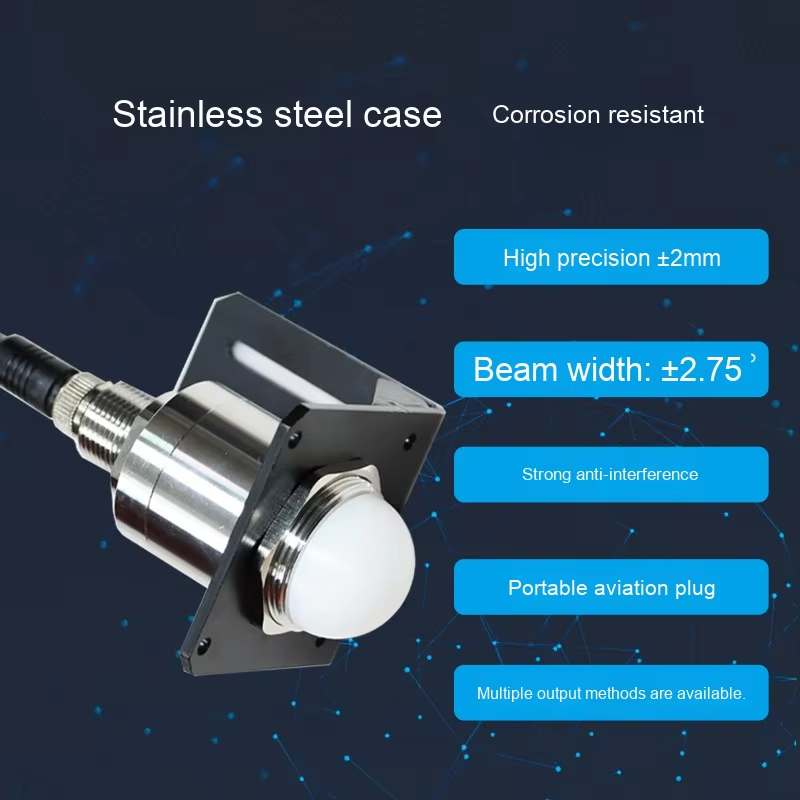Introduction
In Indonesia, agriculture is a crucial pillar of the national economy and the backbone of rural livelihoods. With advancements in technology, traditional agriculture faces challenges in resource management and efficiency enhancement. Radar tri-functional flow meters, as an emerging technology, are gradually transforming farmers’ production methods by providing real-time monitoring of irrigation flow, rainfall, and soil moisture, helping farmers optimize water resource management and achieve sustainable agricultural development.
Background
Indonesia, an archipelagic nation made up of thousands of islands, boasts a diverse climate, with agricultural cultivation ranging from rice to tropical fruits. Despite its favorable natural conditions, improper water resource management and traditional farming methods often lead to low production efficiency and resource wastage. Therefore, finding efficient and reliable agricultural management solutions is crucial.
Advantages of Radar Tri-Functional Flow Meters
Radar tri-functional flow meters utilize non-contact measurement technology to monitor water flow in pipelines, measure rainfall, and assess soil moisture in real-time. Compared to traditional flow meters, these devices offer several significant advantages:
- High Accuracy: Radar technology provides precise measurements, minimizing human error.
- Durability: The devices are corrosion-resistant and suitable for various climatic conditions, reducing maintenance costs.
- Easy Installation: The non-contact installation method simplifies the use and upkeep of the equipment.
Application Case
On a farm in West Java, farmers decided to introduce radar tri-functional flow meters to improve their irrigation system. The farm primarily cultivates rice and various vegetables, and for a long time, farmers faced challenges of water scarcity and uneven irrigation.
Implementation Process:
-
Device Installation: Radar tri-functional flow meters were installed in the main irrigation pipes and field ditches to monitor water flow and rainfall conditions.
-
Data Collection: The devices collected real-time data and transmitted it to farmers’ smartphones and computers via a cloud platform, allowing them to stay informed about irrigation needs and soil moisture changes.
-
Decision Support: Farmers utilized this data to make precise irrigation scheduling decisions, flexibly adjusting irrigation plans based on rainfall and soil conditions, thus avoiding water wastage.
Results:
By implementing the radar tri-functional flow meter monitoring system, the farm saw a 25% increase in rice yield, and the quality of vegetables significantly improved. Farmers not only saved water resources but also reduced costs associated with fertilizers and pesticides, leading to higher economic returns.
Future Outlook
The successful application of radar tri-functional flow meters in Indonesian agriculture not only enhances crop production efficiency but also lays the foundation for sustainable agricultural development. As more farmers recognize the benefits of high-tech solutions, the use of radar flow meters is expected to expand in the coming years, aiding Indonesian agriculture in achieving more efficient and environmentally friendly growth patterns.
Conclusion
The application case of radar tri-functional flow meters vividly illustrates the potential and opportunities technology brings to agriculture. Through modernized water resource management, Indonesian agriculture can not only address the challenges posed by climate change but also create better living conditions for farmers, driving the nation toward sustainable development.
For more water radar sensor information,
please contact Honde Technology Co., LTD.
Email: info@hondetech.com
Company website: www.hondetechco.com
Tel: +86-15210548582
Post time: Jul-03-2025

